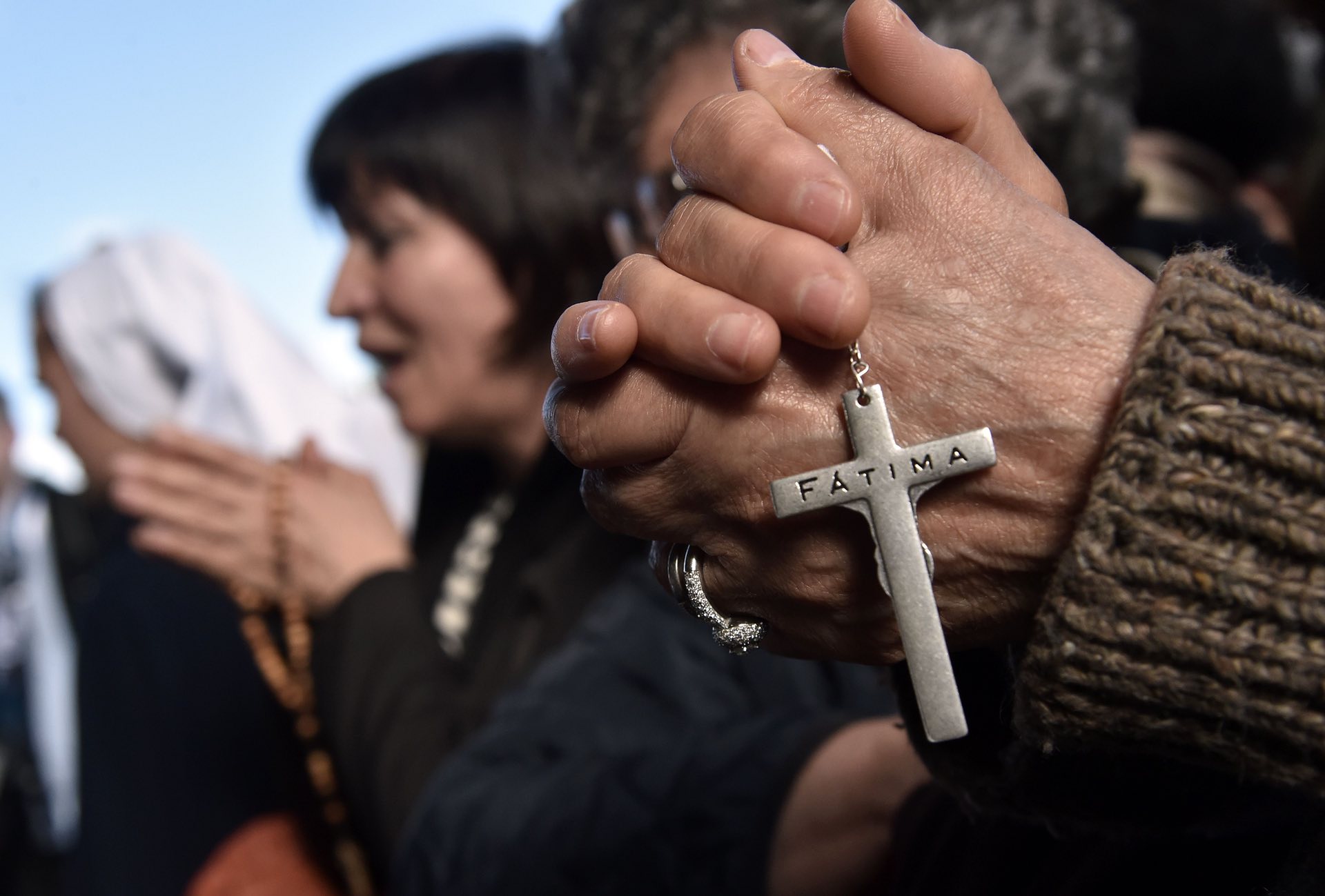Tens of thousands of devotees lined the pontiff’s route and tossed petals as his motorcade drove past.
There was no official crowd estimate, but authorities were expecting 1 million people.

Francis is in the town to celebrate the centenary of the apparitions and to canonise illiterate shepherd children who saw them. He hopes the message of peace they reported 100 years ago, when Europe was in the throes of the first world war, will continue to resonate with Catholics.
Church groups, families and individuals have made their way to Fátima, about 90 miles north of Lisbon. Carrying candles, rosaries and roses, many have visited the statue dedicated to Our Lady of Fátima or tossed wax body parts – ears, hearts and limbs – into a fire to pray for healing.
“It is the second time I am here with a pope; first with John Paul II and now with Papa Francisco,” said pilgrim Elisabete Fradique Conceicao.

On 13 May 1917, while they were grazing their sheep, the children saw the first of a half-dozen visions of the Virgin Mary. They said she revealed to them three secrets – apocalyptic messages foreshadowing the second world war, hell, the rise and fall of communism and the death of a pope – and urged them to pray for peace and turn away from sin.
At first doubted by their parents and the local Catholic church, the children’s story slowly gained believers and was eventually accepted as authentic by the Vatican in 1930.
The children being canonised, brother and sister Francisco and Jacinta Marto, who were nine and seven at the time of the apparitions, died of influenza two years later. Their cousin, Lucia dos Santos, who became the main raconteur of their tale, is on track for beatification, the first step toward becoming a saint. Her case could not begin until after her death in 2005.

The Vatican secretary of state, Cardinal Pietro Parolin, said the importance of Fátima lay in the fact that poor, illiterate children – not the wealthy or learned – were able to convey a powerful message of love and forgiveness at a time of war, when “the talk was of hatred, vendetta, hostilities”.
Fátima has long been associated with St John Paul II. The Polish-born pope credited the Virgin Mary with having saved his life in 1981 when a would-be assassin shot him on Fátima’s feast day – 13 May – in St Peter’s Square.
He made the first of three pilgrimages to Fátima the following May, and one of the bullets fired at him now adorns the crown of the Madonna at the shrine.

Worshippers pray at the shrine before the canonisation of Jacinta and Francisco Marto. | Tiziana Fabi/AFP/Getty
Like John Paul, Argentinian-born Francis is devoted to the Madonna, thanks in large part to the strong role Marian devotions play in the popular piety of Latin American Catholics.
In a video message on the eve of his trip to Portugal, Francis urged all faithful to join him, physically or spiritually, in Fátima. He said: “With all of us forming one heart and soul, I will then entrust you to Our Lady, asking her to whisper to each one of you: ‘My Immaculate Heart will be your refuge and the path that leads you to God.’”
Read More at The Guardian







